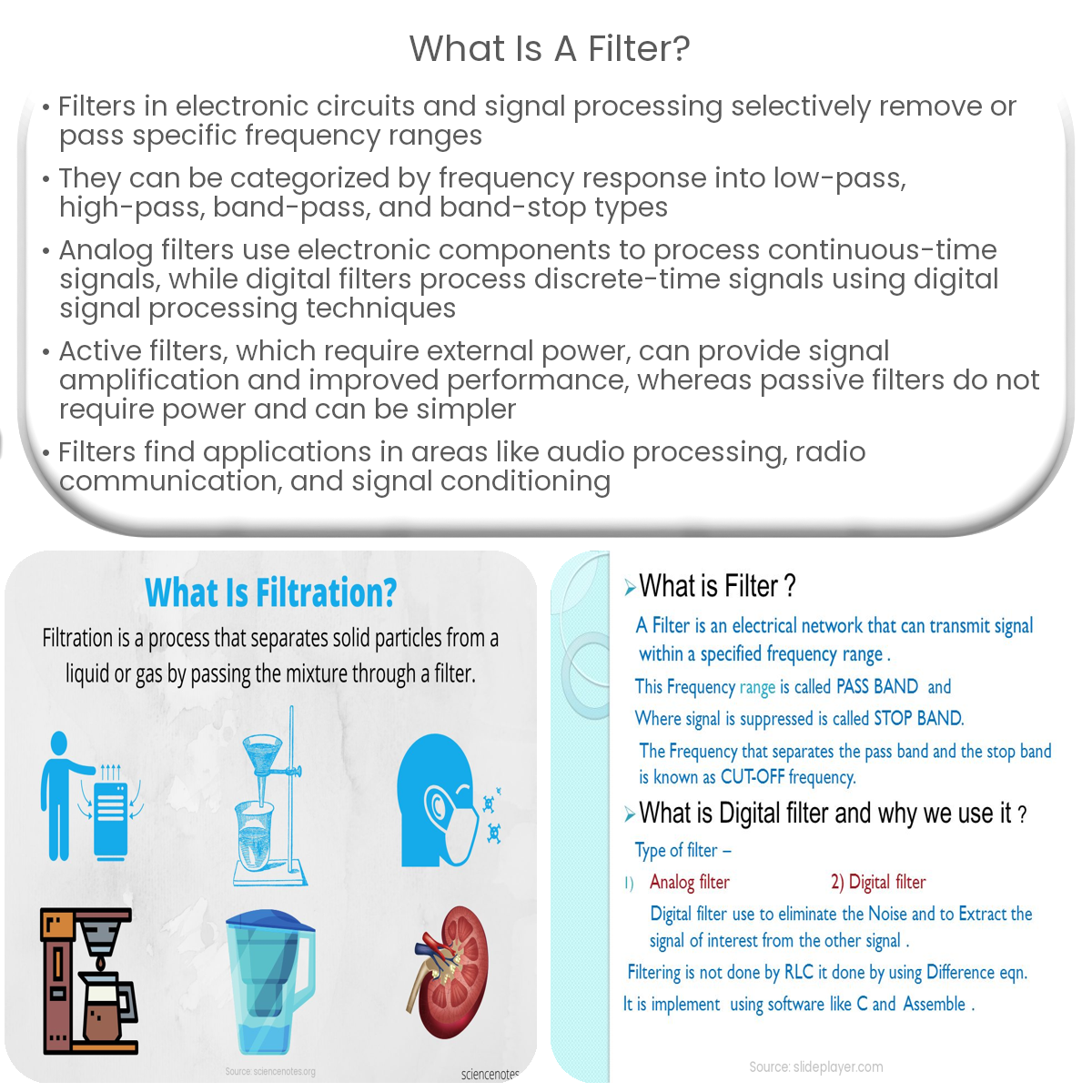A filter is an electronic component that selectively removes or passes specific frequency ranges from a signal, used in audio, RF, and signal processing.
Introduction to Filters
A filter is a crucial component in electronic circuits and signal processing that is designed to selectively remove or pass specific frequency ranges from a signal. Filters can be analog or digital, active or passive, and are typically classified by their frequency response.
Types of Filters
There are four primary types of filters based on their frequency response:
- Low-pass filter: Passes signals with frequencies below a specific cutoff frequency while attenuating signals with frequencies above the cutoff.
- High-pass filter: Passes signals with frequencies above a specific cutoff frequency while attenuating signals with frequencies below the cutoff.
- Band-pass filter: Passes signals within a specific frequency range while attenuating signals outside the range.
- Band-stop (notch) filter: Passes signals outside a specific frequency range while attenuating signals within the range.
Analog vs. Digital Filters
Analog filters use electronic components, such as resistors, capacitors, and inductors, to create a desired frequency response. They operate on continuous-time signals and are widely used in various applications, such as audio and radio frequency filtering.
Digital filters, on the other hand, process discrete-time signals, which are typically represented by a sequence of numerical values. Digital filters use digital signal processing (DSP) techniques and algorithms, making them easily customizable and adaptable for various applications.
Active vs. Passive Filters
Passive filters consist of passive components, such as resistors, capacitors, and inductors, and do not require external power sources. They can be relatively simple, but they may not provide signal amplification and can be less precise than active filters.
Active filters incorporate active components, such as operational amplifiers (op-amps), in addition to passive components. They require an external power source, which allows them to provide signal amplification and improve filter performance, but they can be more complex and susceptible to noise.
Applications of Filters
Filters are widely used in various fields, including:
- Audio processing and equalization
- Radio frequency communication
- Signal conditioning and noise reduction
- Image and video processing
- Biomedical signal analysis
Understanding the different types of filters and their applications is essential for engineers and technicians working with electronic circuits and signal processing systems.


